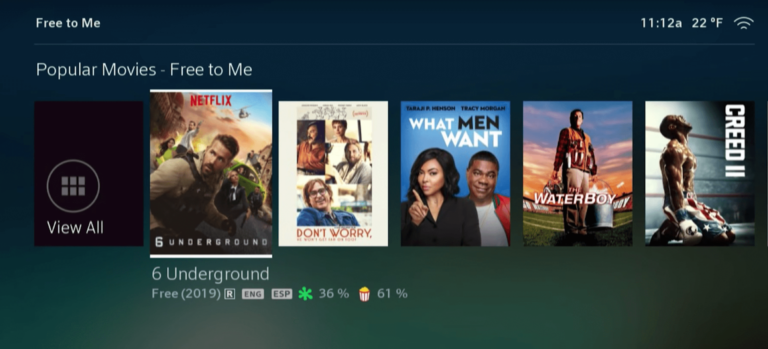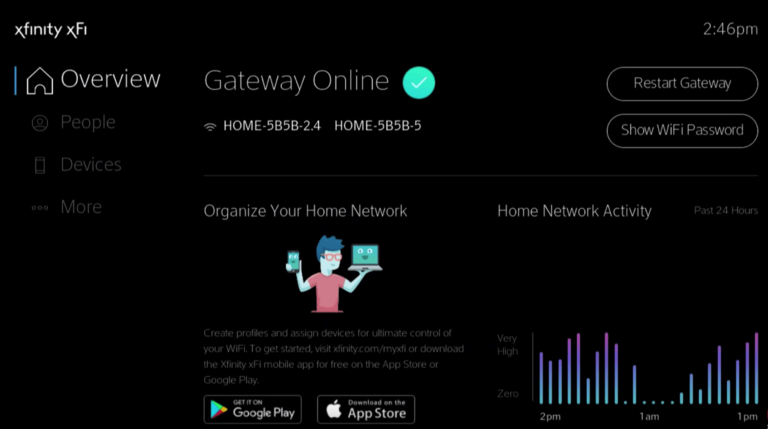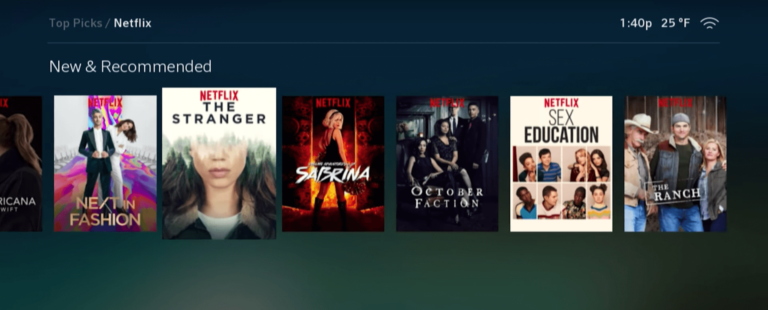Well, here’s the TL;DR: I only got to test drive the Flex about halfway. And that’s a vital part of the story of the Flex. But! We can still talk about what Xfinity Flex is, how you get it, how it works, and whether we like it. Let’s dive in. Flex is not going to bring new customers to Xfinity because it’s an exclusive device. It’s designed to make current subscribers a bit “stickier.” Meaning you’ll have a harder time jumping ship if you have yet another Xfinity device in their rotation. The device itself is fine. It’s got all the ports you would expect, and it includes an Ethernet connection, which I always recommend if you’re able to take advantage of it. The remote is . . . okay. It’s a lot more like a cable remote than a streaming remote, with tons of buttons, including a number pad. Wait, a number pad? What? Yeah, that’s so that if you decide to call it quits with Flex, the same device will work on the X1 platform as well. Flex will connect automatically to your Xfinity Wi-Fi, which is great—except, while I have an Xfinity router, I actually have my network set up through Google Wi-Fi. So I had to do it manually, which was no big deal. But I say you have to be deeply embedded in the Xfinity ecosystem because if you use a third party router—like me, I use the Google Wi-Fi mesh system—then devices hooked up through that router won’t show up here. But sharp viewers will notice that I left a few names off the list here. There’s no Disney+, no Paramount+, no Spotify, and so on and on and on. There are a lot of apps missing. In fact, it’s probably faster to list the apps that it does let you use. I mean, that’s one of the joys of streaming, right? Finding stuff that you never would have known about, let alone watched if you didn’t have it for free right there on your Roku. If all I had was Flex, I’d never have discovered the Japanese dramedy Pretty Proofreader on Viki. Now you can laugh all you want—it’s fantastic. Technically I could just use the exit button, but it took me a while to figure that out. It’s not really intuitive: there is a learning curve with the interface. Now, was there a lot that made me really dislike the Flex? No, not a ton. It was pretty easy to use, honestly, but it was more about what wasn’t there. Because of that lack of available apps, this is not a replacement for your Roku, Fire Stick, or Apple TV. The saving grace for the Flex might be for those who are really all-in on Xfinity’s ecosystem. The Flex gives you pretty good control over your Xfinity router from your TV. Or, if you use smart home and home security features with Xfinity Home, those can be integrated so you have on-screen video feeds from your security cameras and controls for your thermostat and lighting. If you are neck-deep in Xfinity services, maybe Flex is worth a look. The only problem here is . . . that’s not me. I’m not all-in on the Xfinity ecosystem, so I feel like I only got to test half of what the Flex is capable of. And the half that I got to test didn’t impress me very much. But I’m interested to see what happens with the Flex going forward and if there are any changes, updates, or added apps. I am going to continue my testing once I get access to the rest of the Xfinity suite so that I can tell you what I think. Because the promise of it is pretty cool. Let me know what you think in the comments. If you’ve had a chance to use the Flex to its full extent, go ahead and sound off with your take on the device.




